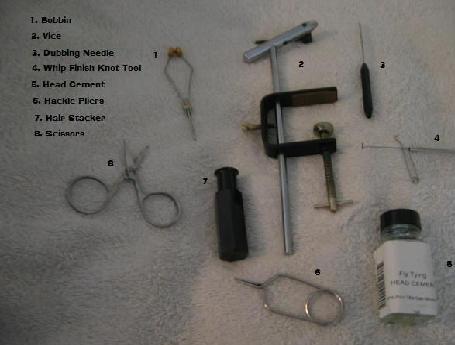 Tying artificial flies has always been about imitating some form of fish prey with natural and/or synthetic materials bonded to a hook. However many fly patterns do not exactly imitate fish prey in nature, yet they are successful patterns in catching fish. The huge range of fly patterns documented today for all sorts of targeted species such as trout, salmon, bass, pan fish, pike, saltwater and tropical exotics, etc.. are not easily categorized as merely imitative, attractors, searchers, or impressionistic, some are something else.
Tying artificial flies has always been about imitating some form of fish prey with natural and/or synthetic materials bonded to a hook. However many fly patterns do not exactly imitate fish prey in nature, yet they are successful patterns in catching fish. The huge range of fly patterns documented today for all sorts of targeted species such as trout, salmon, bass, pan fish, pike, saltwater and tropical exotics, etc.. are not easily categorized as merely imitative, attractors, searchers, or impressionistic, some are something else.Several tools will be needed to properly tie artificial flies. Essential tools are; a vice, to hold the hook, a bobbin, a magnifying glass (for delicate work), hackle pliers, hackle gauges, lights, hair stackers and sizzors. There are optional tools to consider, pliers, toothpicks, bodkins, dubbing twisters, blenders, floss bobbins, whip finishers, wing burners and bobbin threaders.
The hook will determine the basic size and shape of each fly and is generally an important part of any fly pattern description. Hooks come in a wide range of sizes, shapes, lengths and weights. Hooks must be selected to complement the pattern being tied and the method by which it will be fished. Saltwater flies are generally tied on a corrosion resistant hook.
Fly tying material can be anything that can be used to construct a fly on a hook. Some common materials are; thread, yarn, fur, feathers, hair, tinsel, cork, balsa and wire. Todays materials not only include many natural and dyed fur, hair and feathers but a wide range of synthetic materials are used. All manner of animal hair and fur such as rabbit, mink, muskrat, fox, and bear to name a few. As for feathers chicken, goose, pheasant, turkey and duck are still commonly used in the construction of artificial flies

No comments:
Post a Comment